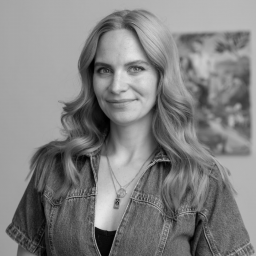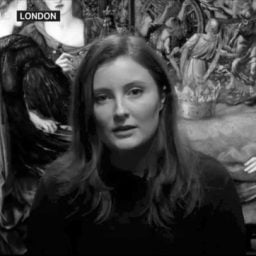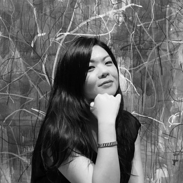Art & Exhibitions
From Monet’s Thames Views to a Funk Garden in a Royal Park, Here Are 8 Must-See Museum Shows in London
These are the buzziest shows to see during Frieze Week.

London’s museums and galleries are firing on all cylinders as Frieze Week approaches. There is simply too much to see in just a few days, so we’ve a narrowed down the city’s offerings to a handful of must-see shows that offer a little bit of everything: From Impressionist masterpieces to A.I.-generated hymns, and Brazilian modernist sculpture to 21st-century robots.
Lauren Halsey’s “Emajendat” and Holly Herndon and Mat Dryhurst’s “The Call” at Serpentine Gallery

Lauren Halsey, land of the sunshine wherever we go II (detail) (2021). Courtesy Lauren Halsey.
Lauren Halsey has quickly become known for her work that investigates connections between communities and architecture, especially through a visual vernacular that evokes South Central Los Angeles, where her family has lived for generations, as well as iconography from the African diaspora and queer icons. The show at Serpentine’s South gallery, opening October 10, comes hot on the heels of the 37-year-old artist’s Met roof commission last year and her canal-side installation at this year’s Venice Biennale. It is the artist’s first solo exhibition in the U.K. and transforms the gallery into a “funk garden,” drawing inspiration from both funk music and the gallery’s location in Kensington Gardens. Among the highlights is a prismatic floor and walls made from CDs provide, her signature “funkmounds”—cavernous plaster architectural structures—and a live water fountain. Additionally, Halsey will debut her first moving image work.
Just a five-minute walk through the park and over the bridge at Serpentine’s North gallery is Holly Herndon and Mat Dryhurst’s stunning new show, “The Call,” which is also worth seeing—or hearing. In keeping with Halsey’s theme of musical inspiration, although leveraging an entirely different genre, Herndon and Dryhurst have employed a suite of A.I. models trained on a dataset of new recordings of choral singers from around the U.K. to create a technological temple.
—Margaret Carrigan
“Van Gogh: Poets and Lovers” at the National Gallery and “Monet and London” at the Courtauld Gallery
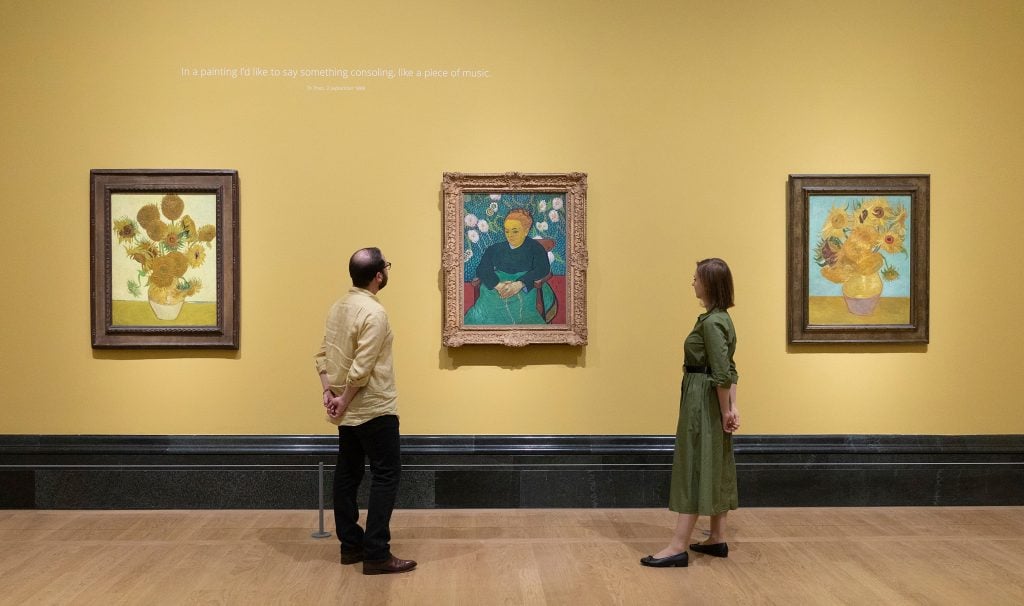
Installation view of “Van Gogh: Poets and Lovers” at the National Gallery in London. Photo: © The National Gallery, London.
In the last few weeks, Impressionism has taken over London, with two blockbuster shows dedicated to Van Gogh and Monet respectively. Among the most critically acclaimed institutional offerings in the U.K. capital this year are “Van Gogh: Poets and Lovers,” on view at the National Gallery, and “Monet and London: Views of the Thames” at the Courtauld, both until January 19, 2025. Each exhibition puts a new spin on well known and a beloved artist. Moreover, given the sheer volume of important loaned works from around the world, both shows are considered once-in-a-lifetime opportunities to see so many works by these peerless artists.
In the case of Van Gogh, some of French artist’s most iconic works are joined by sensitive portraits of friends and a studies of his favorite spaces, from gardens to his own bedroom, offering a glimpse into how he reimagined everyday surroundings as part of his unique artistic universe. Just a ten-minute stroll down the Strand, the Courtauld’s show reveals why Monet fell in love with London: Not for its majestic monuments but for its air pollution, which led to obsessive paintings of its ever-changing atmospheric conditions.
—Jo Lawson-Tancred
Geumhyung Jeong’s “Under Construction” at ICA London
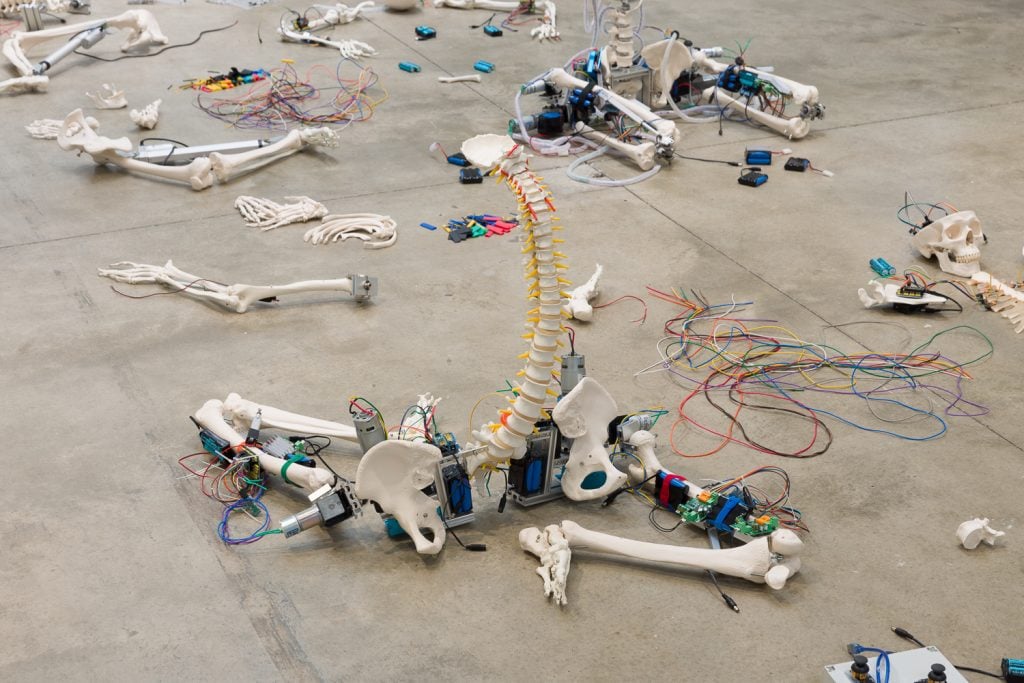
Geumhyung Jeong, “Under Construction,” ICA London installation, 2024. Photo: Rob Harris. Courtesy of ICA.
Geumhyung Jeong is full of surprises. Born in Seoul in 1980, the innovative artist tactfully blends choreography with objects and technology in her practice. She has wowed audiences around the globe, from a gallery show in Berlin to a Kunsthalle performance in Basel, and even fashion fans on the Miu Miu runway. This time, Jeong brings an eerie installation comprised of plastic human skeleton models and self-made robots to London’s Institute for Contemporary Arts (ICA) for her solo show “Under Construction.” The exhibition features newly commissioned works, including an installation of video work and sculptures.
Don’t be scared by the eerie mechanical body parts scattered on the gallery floor—they will make sense if you get a chance to experience Jeong’s performance. She often uses her body like painters use their brushes, charting the uncanny relationship between humanity and machines through her movements with hardware tools and mannequin parts. The artist will give two performances during the week of Frieze, on October 8 and 9, and again in November before the show concludes on December 15. Tickets are required so act fast.
—Vivienne Chow
“Mike Kelley: Ghost and Spirit” at Tate Modern
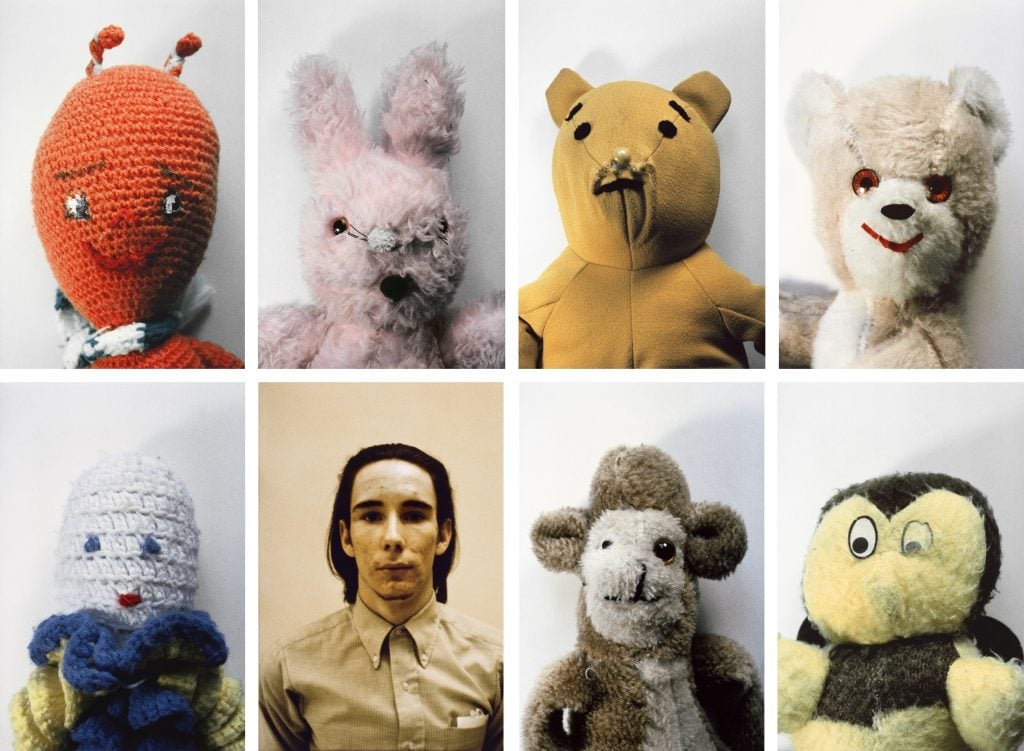
Mike Kelley, detail of Ahh…Youth! (1991). Mike Kelley Foundation for the Arts © Mike Kelley Foundation for theArts. All Rights Reserved/VAGA at ARS, NY and DACS, London 2024.
In his expansive and explosive installations, Mike Kelley had a unique ability to marry pop culture with deep philosophy, and childlike wonder with adulthood anxieties. Tate Modern’s recently opened survey marks the first major exhibition dedicated to the American artist and features everything from drawings and collages to videos and multimedia installations that constitute Kelley’s “dark pop art” oeuvre. What the exhibition does well—and perhaps what makes it timely—is underscore the artist’s investigation of social belief systems, including conspiracy theories, and how personal memory may shape how we understand the world around us, for better or worse.
Drawing from his working-class upbringing in the post-industrial city of Detroit, Michigan, in the 1970s and ’80s, Kelley mined his own memories for inspiration. He grappled with depression until death in 2012 in Los Angeles, and his fraught relationship with not only his past but his ability to experience joy and a safety in the present infuses his work. His tattered textile-and-stuffed-animal sculptures—such as More Love Hours than Can Ever Be Repaid and The Wages of Sin (1987), on view at Tate—are some of his most iconic works, as are those referencing Superman, a totemic figure that appears frequently throughout his work to represent not a hero, but someone utterly alone who could never go home.
—Margaret Carrigan
“Lygia Clark: The I and the You” and Sonia Boyce’s “An Awkward Relation” at Whitechapel Gallery
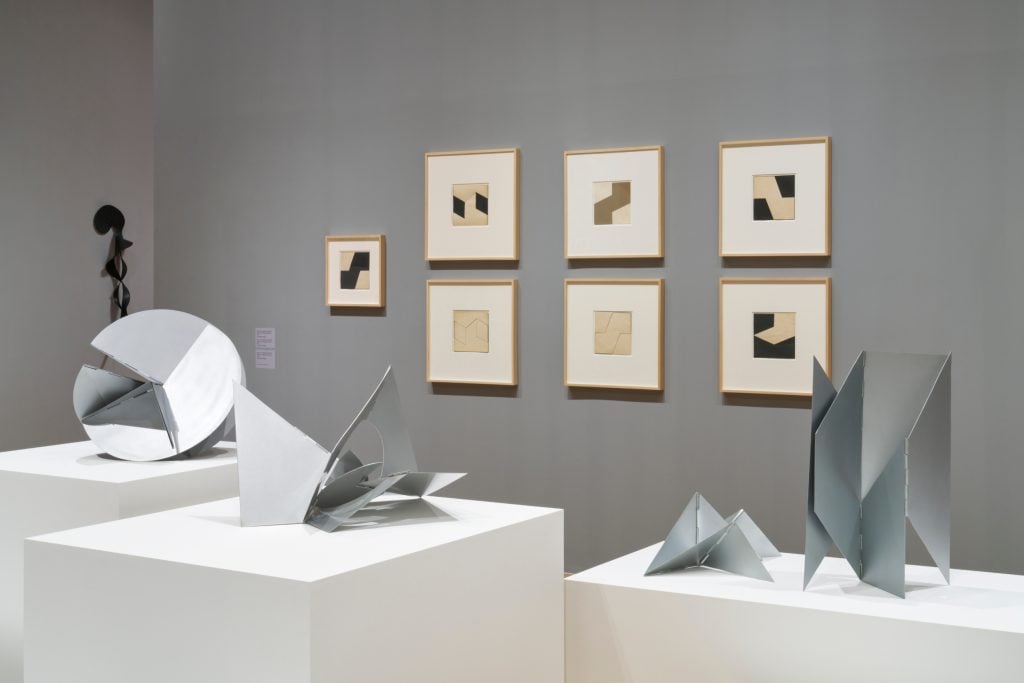
Installation view of “Lygia Clark: The I and the You” at Whitechapel Gallery in London. Photo: Above Ground Studio.
Brazilian modernism has been having a moment this year, with many important names put on the global stage by Brazilian curator Adriano Pedrosa in his “Foreigners Everywhere” exhibition at the 60th Venice Biennale. A notable absence was Lygia Clark, but unlike many of her peers who were unfairly overlooked, Clark has been a huge international name for many decades with a notable retrospective of her work was staged at the 34th Venice Biennale in 1968. Her practice is also notable for its early experimentation with more participatory modes of experiencing art that explored its therapeutic potential.
Her first major U.K. institutional show is therefore much belated in 2024. This Whitechapel Gallery show traces Clark’s enormous influence on the Latin American art scene as co-founder of the non-concrete art movement, which pushed for a more poetic and expressive approach to art making. The exhibition is put in dialog with a number of pivotal works by esteemed British artist Sonia Boyce, whose presentation at the 2022 Venice Biennale was given the Golden Lion award for best national pavilion. Boyce said she was introduced to Clark’s work in the 1990s and felt a strong connection with the Brazilian artist’s practice. “An Awkward Relation” brings together a number of rarely seen works to explore themes of interaction, participation, and improvisation, reflecting some of the radical approaches that Clark pioneered.
—Jo Lawson-Tancred

